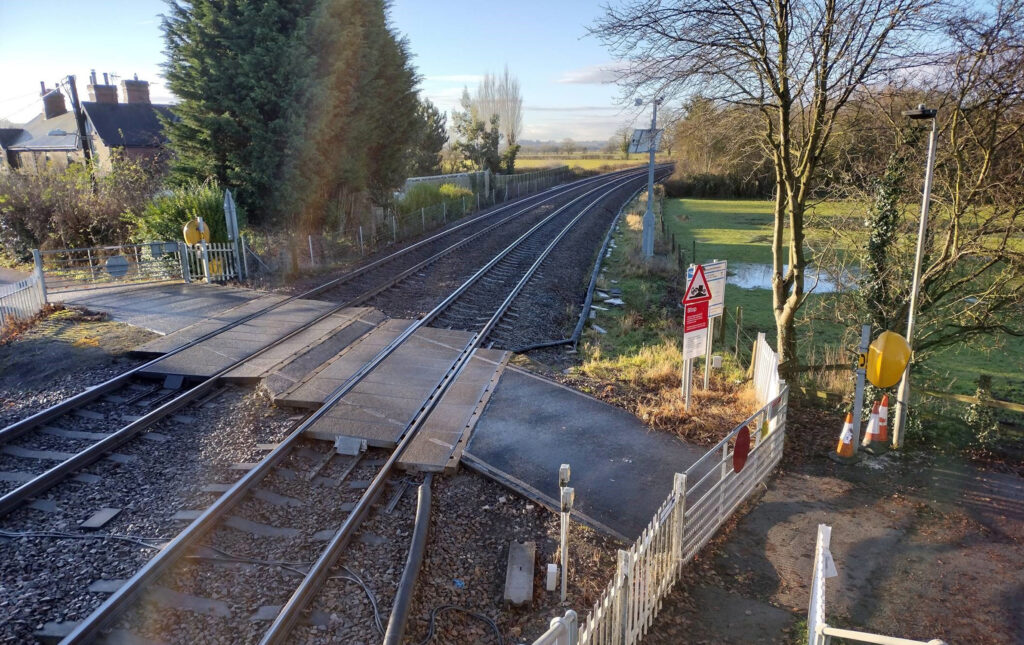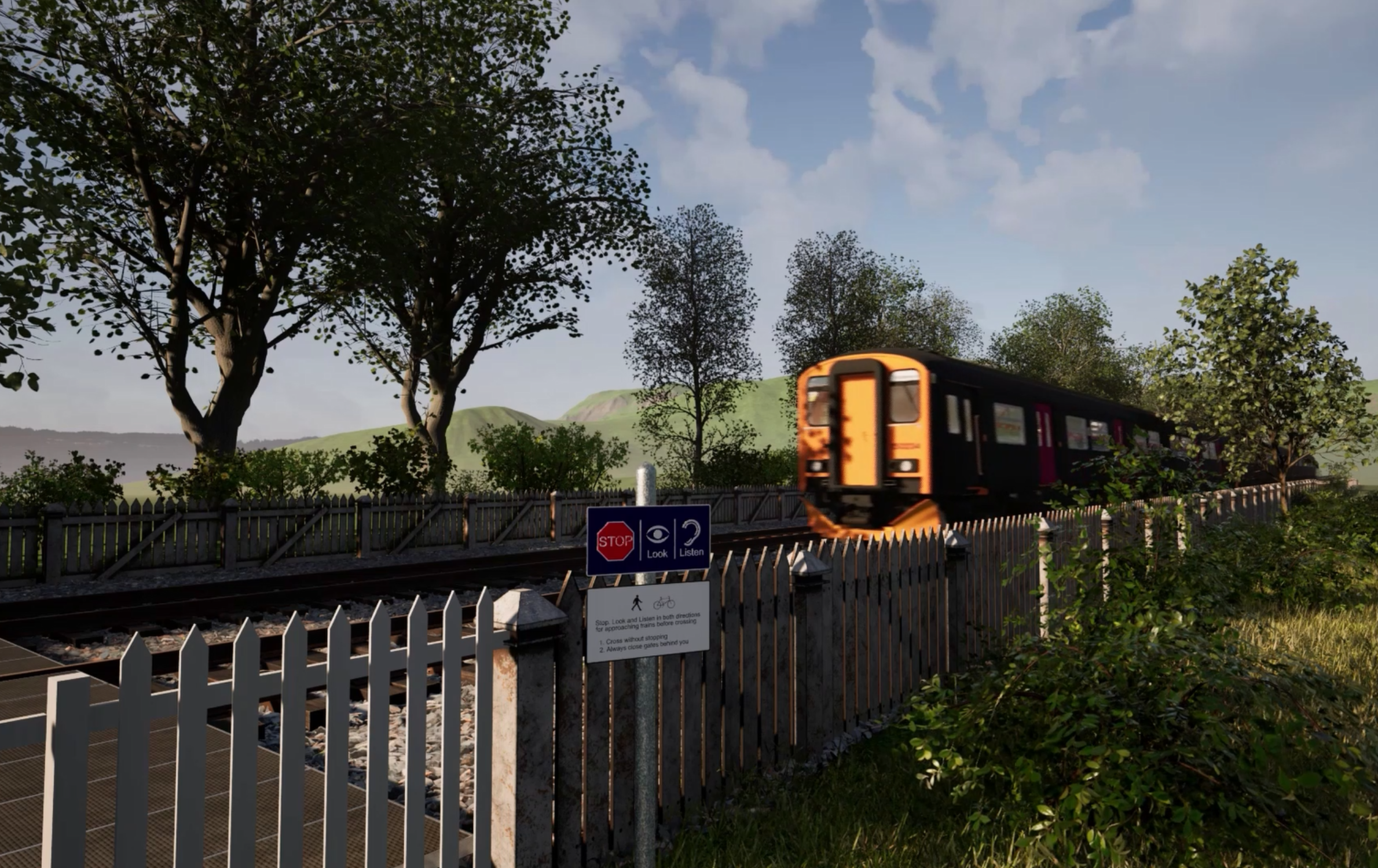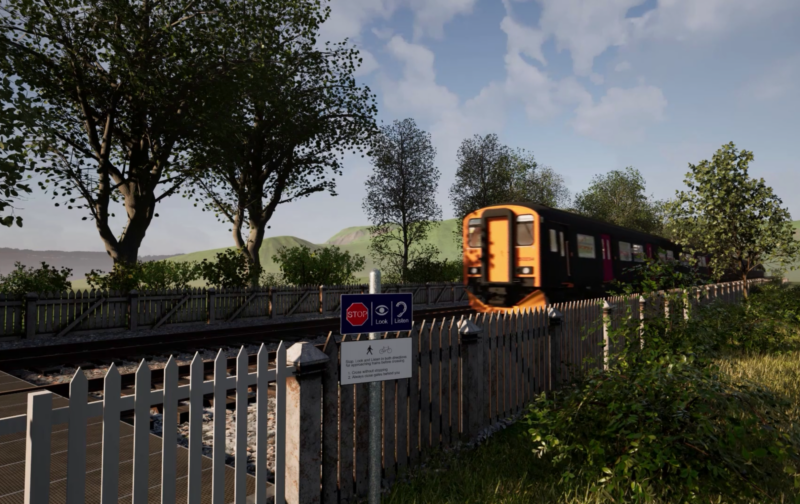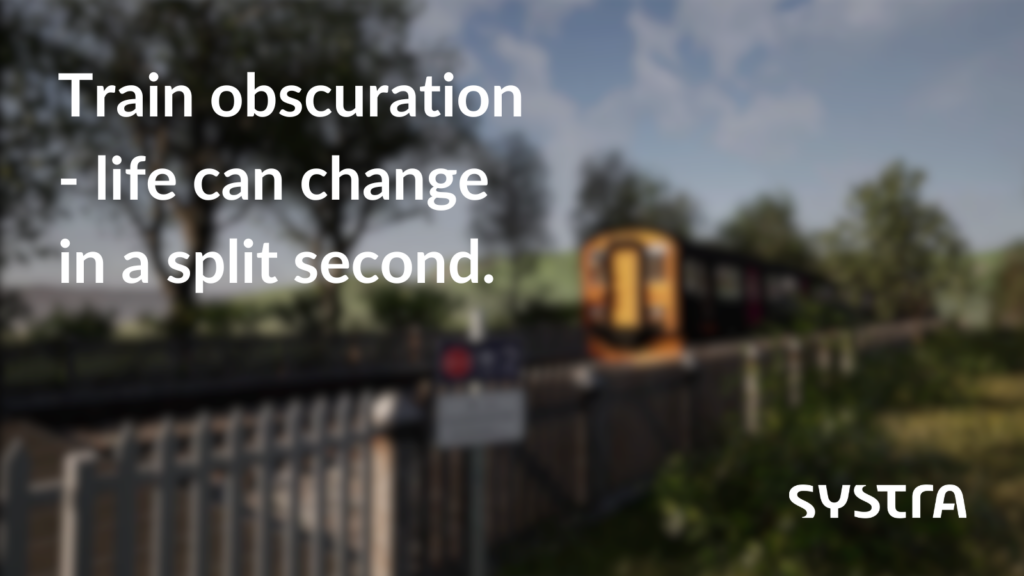June 6th is International Level Crossing Awareness Day (ILCAD), a global initiative to raise awareness of level crossings across the globe. The theme is ‘vulnerable users’ with the key message being ‘Beware of trains. Life can change in a split second’. In this Insight, Michael Westwood, our Principal Engineer (Level Crossings) takes a look at the perception of risk around level crossings, and explains how our work helps to enhance safety in level crossing design.
There are nearly 6,000 level crossings on the UK rail network and approximately 70% of these are level crossings where it is the user’s responsibility to check whether it is safe to cross (either by sight or by telephoning the signaller). As evidenced by Network Rail’s safety campaigns, there is a growing trend of distraction at level crossings, contributing to a high number of near misses at level crossings (approximately 500 per year according to Network Rail’s website).
On a two-track railway, there is the chance that two trains can arrive at a level crossing within the same timeframe – one on each track heading in opposite directions. This is not an issue for active crossings (those that warn a user of an approaching train by the operation of ‘active’ equipment such as barriers, gates, warning lights and/or audible alarms); the safety equipment will continue to operate in this scenario. However, at passive crossings (those where it is the user’s responsibility to check whether it is safe to cross the railway) there is no warning of an approaching train except for the train horn, which may be sounded at some crossings. In this scenario, there is a risk that a train leaving the level crossing on the track closest to the user obscures the approach of a train on the track furthest from the user.
This risk has sadly been realised on occasion. In February 2024, the Rail Accident Investigation Branch (RAIB) updated its report into a pedestrian who was struck by a train at Lady Howard footpath and bridleway crossing. A possible causal factor was that the pedestrian did not perceive the risk arising from the possibility that the passing train was hiding another train.
Our short animation below demonstrates how easily this train obscuration risk can occur. It depends on a number of factors aligning, commonly referred to in risk circles as the ‘swiss cheese model’, but should a user arrive at a passive crossing, get potentially distracted by their surroundings or by personal technology, and two trains arrive at the crossing at the same time, then this is a very real risk to contend with.
Click the image to watch the short animation.
A recommendation of the RAIB report was that Network Rail should consider technological solutions, as well as user awareness campaigns. As demonstrated by the animation, SYSTRA’s Digital Engineering team can produce tailored animations to highlight specific level crossing risks. These can be used either for general safety campaigns or targeted community education strategies at specific level crossings.
Designing safe level crossings is of paramount importance, whether this consists of subtle enhancements for specific risks including the application of the new level crossing signage formats introduced by ‘The Private Crossings (Signs and Barriers) Regulations 2023’, or upgrades to the level crossing type itself (including MCB-OD2). At SYSTRA, we have the expertise required across our teams to assess and upgrade the safety of all types of level crossing. As well as the key level crossing deliverables of Ground Plans, Draft Level Crossing Orders and Risk Assessments (including input from our Human Factors specialists where required), SYSTRA can provide appropriate deliverables for Civils, Track, Electrical & Plant, Highways, Signalling and Geotechnical within any level crossing submission. Working closely across stakeholders ensures all schemes address key priorities of safety, alongside efficiency and cost.
Our in-house Level Crossings team evaluated 37 level crossings, including options for upgrades and closures, on the Transpennine Route Upgrade. Working with Network Rail, we were able to make recommendations on all existing level crossings on the core route between Leeds and York which will result in a safer and more resilient railway. Find out more here.
Find out more about our Level Crossings offering.

- services
Level Crossings
Read more sur Level Crossings
- services
Technical Systems
Read more sur Technical Systems
- projects


 Australia
Australia  Brazil
Brazil  Canada
Canada  Chile
Chile  China
China  Columbia
Columbia  Denmark
Denmark  Egypt
Egypt  France
France  India
India  Indonesia
Indonesia  Ireland
Ireland  Italy
Italy  Malaysia
Malaysia  New Zealand
New Zealand  Norway
Norway  Panama
Panama  Peru
Peru  Poland
Poland  Portugal
Portugal  Saudi Arabia
Saudi Arabia  Singapore
Singapore  South Korea
South Korea  Spain
Spain  Sweden
Sweden  Taiwan
Taiwan  Thailand
Thailand  Türkiye
Türkiye  United States
United States  Vietnam
Vietnam 